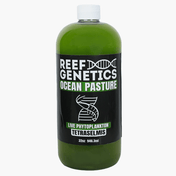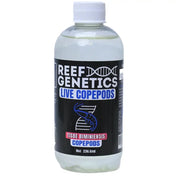Your return pump plays a crucial role in keeping your aquarium system stable by circulating water through the sump and back into the display tank. But what happens when the flow rate isn’t quite right? Whether it’s pushing too much water or not enough, an imbalanced return flow can lead to a host of frustrating issues—many of which may go unnoticed until something starts to feel off. In this guide, we’ll walk through the signs of both high and low return pump flow rates, explain how they affect your system, and offer practical tips for diagnosing and correcting the issue.
Why Flow Rate Matters
Flow rate through your return pump determines how efficiently your sump-based filtration system operates. When properly tuned, the return flow delivers stable turnover through your filter socks, skimmer, media reactors, and any inline equipment like UV sterilizers. This balanced movement of water is key to maintaining nutrient export, oxygenation, and temperature regulation.
Too much flow, and your drain system might struggle to keep up, creating noise, turbulence, or microbubbles. Too little, and your sump can become stagnant, your skimmer inefficient, and your display tank poorly circulated at the surface. Even small discrepancies in return flow can create ripple effects throughout your system.
Recognizing Flow That’s Too High
When your return pump is moving water too quickly for your system to handle, the symptoms typically show up in both visual and auditory cues. Microbubbles entering the display tank are a common giveaway—caused by turbulence in the sump or water rushing through baffles too fast. Your overflow box may also become unusually noisy. If the drains can’t keep up with the return rate, you’ll hear gurgling, sucking, or splashing as the system struggles to stay balanced.
Other signs include:
- Water levels in the sump that rise and fall dramatically
- Skimmer chambers flooding or producing unstable foam
- Salt creep forming near return outlets or splash zones
Each of these can stem from excessive velocity or turbulence, often caused by an oversized or overpowered return pump running at full throttle.
If your return pump is running faster than your system is designed to handle, there are several clues to watch for. One of the first is microbubbles entering the display tank, which are often caused by excessive turbulence in the sump or by water rushing too quickly through baffles. You might also notice unusually noisy drain lines. When water returns to the tank faster than it can drain, your overflow system can produce gurgling, sucking, or splashing sounds that signal a mismatch in flow capacity.
In extreme cases, you may see the water level in your sump fluctuate wildly or even run dry in the return chamber. This can cause your auto top-off to misfire and potentially introduce excess freshwater to the tank. Skimmers can also be affected—too much flow reduces contact time and may cause your skimmer to overflow or behave erratically. Finally, look around your plumbing and return outlets. Salt creep, splash marks, or visible spray near your return lines may indicate high velocity that needs to be reduced.
Signs Your Flow Rate Is Too Low
Low return flow presents a different kind of risk—one that’s quieter and more subtle, but equally problematic over time. When water isn’t circulating efficiently through the sump, waste builds up, oxygen levels can drop, and temperature gradients may form between the sump and display.
You may observe:
- Uneven heating or poor temperature stability
- Detritus collecting in the sump or low-flow corners of the display
- Weak surface agitation, leading to poor gas exchange
- Reduced performance from UV sterilizers or refugiums
Filtration becomes less effective across the board. Skimmers, media reactors, and filter socks are all designed to process a certain volume of water per hour—falling below that can lead to slow but steady increases in nutrients.
On the other end of the spectrum, a return pump that’s too weak or throttled too far can create a different set of problems. Water may become sluggish in both your sump and your display, leading to detritus settling in low-flow areas. Surface agitation may weaken, causing poor gas exchange and lower oxygen levels.
If your nutrient export seems inconsistent, with rising nitrate or phosphate levels despite aggressive filtration, low turnover may be to blame. The slower the water moves through your skimmer, filter socks, or media chambers, the less efficiently they process waste. Similarly, your heater may have difficulty maintaining a stable temperature across the system if flow through the sump is inadequate.
You may also notice reduced performance in your refugium or UV sterilizer, both of which require steady, predictable flow to function effectively.
How to Evaluate and Adjust Flow Rate
If you're not sure whether your return pump is performing as it should, a simple DIY test can still get you close: time how long it takes to fill a known container (like a 5-gallon bucket) and convert that into gallons per hour (GPH). While it won't be laboratory-grade accuracy, it's a perfectly useful method for evaluating whether you're in the right range.
From there, your adjustment method depends on the pump type:
- DC Pumps typically come with a controller. These allow you to adjust flow in fine increments, helping you find the sweet spot for your system.
- AC Pumps require a manual valve. Gate valves are ideal because they throttle flow without adding too much resistance. Avoid ball valves—they can create unnecessary backpressure.
It’s also important to revisit your plumbing layout. Every foot of vertical lift (head height), every elbow, and every restrictive fitting eats into your pump’s performance. Check the manufacturer’s flow curve to compare your estimated head pressure against what the pump is realistically delivering.
If you're unsure about your actual return pump performance, you don’t need fancy equipment to check. A flow meter—digital or mechanical—can give you an exact GPH reading after head pressure. But you can also get a reasonable estimate with a simple test: time how long it takes to fill a known volume, like a 5-gallon bucket, from your return line. Use that to calculate your real-world flow rate.
If your return pump is DC, you likely have a built-in controller that lets you fine-tune speed and output. Start low and increase in small increments until the system stabilizes. If you're using an AC pump, you may need to install a gate valve to manually throttle flow. Avoid ball valves for this purpose—they create backpressure that can strain the pump.
Also, consider whether your plumbing layout is impacting performance. Head height, number of elbows, and narrow return lines can all reduce effective flow. Always compare your system’s head pressure against the pump’s performance curve to see what it's truly delivering.
How Much Flow Is Ideal?
While the perfect flow rate varies by tank, a good rule of thumb is to turn over your display volume through the sump about 5 to 10 times per hour. For a 75-gallon reef, this means a return flow of 375 to 750 GPH after head pressure is accounted for. SPS-heavy systems with higher nutrient export needs may lean toward the upper end, while soft coral or fish-only setups can function just fine with lower turnover.
Keep in mind that return flow is not the same as total tank circulation. That’s handled by powerheads and wave makers inside the display. Your return pump doesn’t need to create turbulence—it just needs to feed the filtration system efficiently and quietly.
Getting It Dialed In
Finding the right flow rate is part technical setup, part observation. First, confirm your overflow can handle the return pump’s output. If you’re using a Herbie or Bean Animal drain, make sure the siphon line is tuned to match your pump speed.
Next, stabilize the sump. A bouncing water level in the return chamber can cause problems with auto top-offs and lead to inconsistent skimmer output. Proper baffling, a steady pump speed, and correct ATO placement all help here.
Finally, watch how your tank responds. If corals close up or fish avoid high-flow zones near the return, the velocity may be too strong. If you notice detritus accumulating or poor surface movement, the flow may be too weak. Slightly undershooting the ideal return rate and compensating with in-tank flow is often the safest, quietest approach for most systems.
Fine-tuning your return pump comes down to balance. First, make sure your overflow and drain system can handle the rate of return water—Herbie and Bean Animal drains are popular for their silent performance when properly balanced. Second, stabilize the sump water level. A fluctuating return chamber leads to unreliable skimmer performance and false triggers in ATO systems. Finally, observe your tank inhabitants. Fish struggling to swim near return nozzles or corals that retract when flow increases can be signs that you're pushing too much water.
If you're ever in doubt, err on the side of slightly less return flow and compensate with in-tank circulation. You’ll reduce sump noise, preserve pump lifespan, and give your filtration time to work.
Final Thoughts
Tuning your return pump flow isn’t about hitting a single perfect number—it’s about creating a smooth, consistent loop that supports the rest of your system. Pay attention to the signals your sump, livestock, and equipment are giving you. When everything is in sync, your system runs quieter, cleaner, and more efficiently.
If you need help figuring out what your actual flow rate is, troubleshooting excess noise, or selecting a return pump that fits your plumbing layout and tank goals, reach out to our team. We’re here to help you get everything dialed in the way it should be.



















